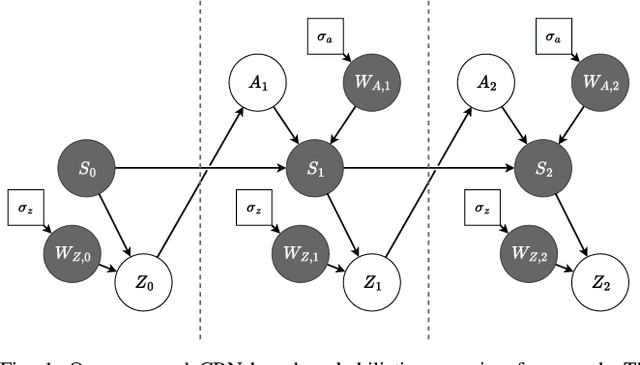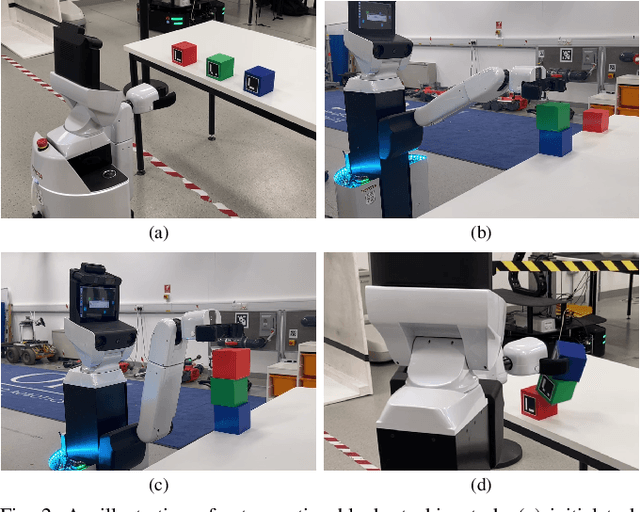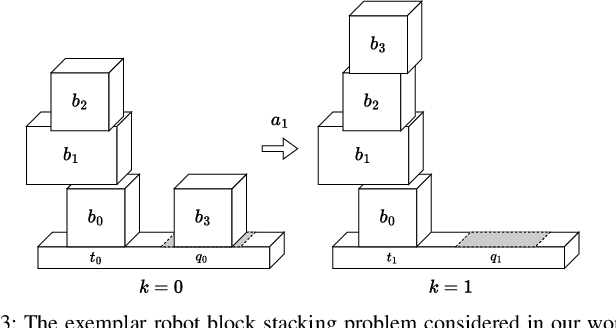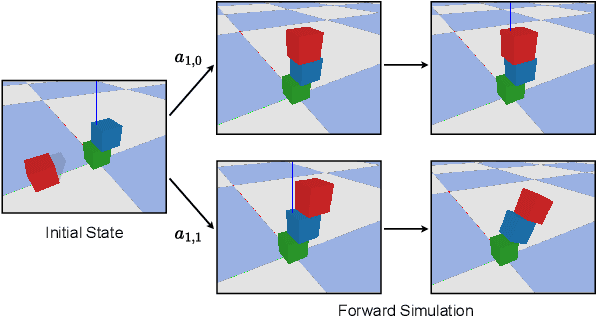Jonathan Routley
Physics-Based Causal Reasoning for Safe & Robust Next-Best Action Selection in Robot Manipulation Tasks
Mar 21, 2024



Abstract:Safe and efficient object manipulation is a key enabler of many real-world robot applications. However, this is challenging because robot operation must be robust to a range of sensor and actuator uncertainties. In this paper, we present a physics-informed causal-inference-based framework for a robot to probabilistically reason about candidate actions in a block stacking task in a partially observable setting. We integrate a physics-based simulation of the rigid-body system dynamics with a causal Bayesian network (CBN) formulation to define a causal generative probabilistic model of the robot decision-making process. Using simulation-based Monte Carlo experiments, we demonstrate our framework's ability to successfully: (1) predict block tower stability with high accuracy (Pred Acc: 88.6%); and, (2) select an approximate next-best action for the block stacking task, for execution by an integrated robot system, achieving 94.2% task success rate. We also demonstrate our framework's suitability for real-world robot systems by demonstrating successful task executions with a domestic support robot, with perception and manipulation sub-system integration. Hence, we show that by embedding physics-based causal reasoning into robots' decision-making processes, we can make robot task execution safer, more reliable, and more robust to various types of uncertainty.
Towards a Causal Probabilistic Framework for Prediction, Action-Selection & Explanations for Robot Block-Stacking Tasks
Aug 11, 2023Abstract:Uncertainties in the real world mean that is impossible for system designers to anticipate and explicitly design for all scenarios that a robot might encounter. Thus, robots designed like this are fragile and fail outside of highly-controlled environments. Causal models provide a principled framework to encode formal knowledge of the causal relationships that govern the robot's interaction with its environment, in addition to probabilistic representations of noise and uncertainty typically encountered by real-world robots. Combined with causal inference, these models permit an autonomous agent to understand, reason about, and explain its environment. In this work, we focus on the problem of a robot block-stacking task due to the fundamental perception and manipulation capabilities it demonstrates, required by many applications including warehouse logistics and domestic human support robotics. We propose a novel causal probabilistic framework to embed a physics simulation capability into a structural causal model to permit robots to perceive and assess the current state of a block-stacking task, reason about the next-best action from placement candidates, and generate post-hoc counterfactual explanations. We provide exemplar next-best action selection results and outline planned experimentation in simulated and real-world robot block-stacking tasks.
 Add to Chrome
Add to Chrome Add to Firefox
Add to Firefox Add to Edge
Add to Edge